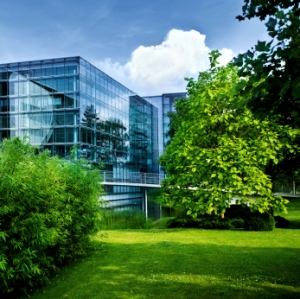For many individuals, when we hear the word nuclear, an image of a nuclear bomb or nuclear weapon immediately pops into our head. However, with the prevalent concept of mutual mass destruction, the threat from nuclear power seems much more imminent and dangerous than the threat of a nuclear bomb. A fear of nuclear meltdowns persists from previous accidents including Chernobyl, Three Mile Island and more recently Fukushima, Japan. The nuclear meltdown catastrophe which occurred in Fukushima, Japan on March 11th 2011, brought the fear of nuclear disasters to the world’s forefront.
Why did the nuclear meltdown occur? The Fukushima Daiichi and Daini power plants are located near Japan’s Eastern shoreline. On March 11th 2011, the Great East Japan Earthquake occurred one hundred and thirty kilometers offshore with a magnitude of 9.0. The earthquake caused a large tsunami which killed nineteen thousand civilians and destroyed close to a million buildings. Although no serious damage occurred to the nuclear reactors from the earthquake, all six external power supplies were extinguished. When the tsunami hit both power plants, the water submerged and damaged the seawater pumps for the main condenser and auxiliary cooling circuits.
With the significant damage caused by the earthquake and subsequent tsunami, all employees evacuated the buildings for fear of nuclear meltdown in reactors one through three. At 7:03 pm a nuclear emergency was declared. Although, this major nuclear catastrophe occurred two years ago, the world has faced serious consequences. According to various studies, a radioactive plume of water in the Pacific Ocean, will reach the United States shoreline by 2014. The radioactive plume comes from radioactive particles falling out from the atmosphere into the ocean, contaminated water directly released from damaged power plants and water that became contaminated by leaching radioactive particles from tainted soil. This radioactive plume may have subsequent health and environmental impacts.
With three major nuclear power disasters highlighted throughout history, the question comes to mind, is nuclear energy a form of sustainable energy? The answer is that it is not. Various organizations have deemed nuclear energy as unsustainable, uneconomic, dirty and dangerous. Nuclear power is inflexible in nature, generates radioactive waste and has hidden costs. The energy is created by splitting uranium atoms in a process called nuclear fission. Although, generating nuclear energy has no upfront greenhouse gas emissions, uranium itself is a non-renewable energy source thus making it an unsustainable practice.
Although, using nuclear energy is flawed, the world on a global level cannot immediately stop using non-renewable energy sources. The United States should take a leadership role in this area of expertise and begin to build renewable energy infrastructure and provide increased financial incentives for using renewable alternatives. Nuclear energy can be used as a bridging source while the world innovates the best method for diversifying its energy resources. We will never find a perfect energy source that solves all energy issues but with intensified collaboration on global, regional and local levels, it is feasible for countries to begin to phase out fossil fuel use with renewable alternatives.












